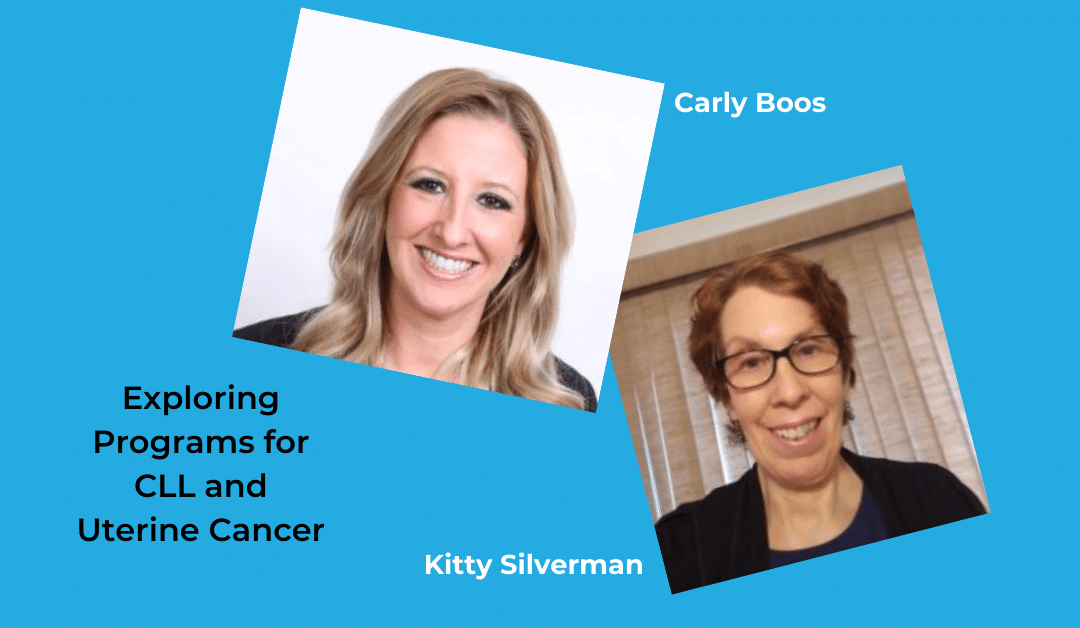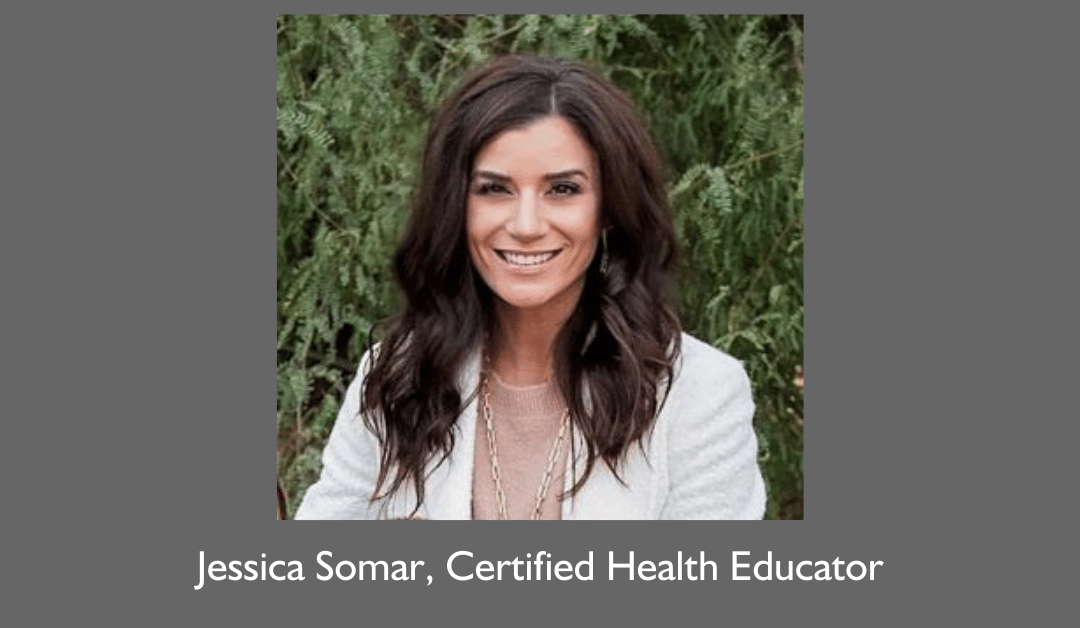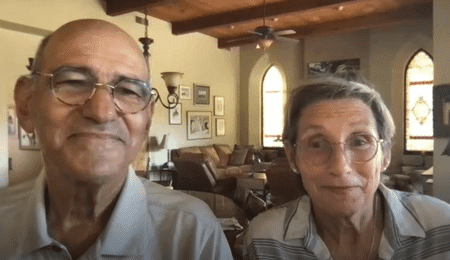
by Bag It Team | Sep 20, 2022 | Podcasts
In this month’s Podcast, Executive Director Mindy Griffith welcomes guests Carly Boos, CLL Society Executive Director and Uterine Cancer Program Director and Kitty Silverman, SHARE Support Center Uterine Cancer Program Director. They talk about their partnership with Bag It Cancer and the valuable services and programs offered for individuals with CLL or uterine cancer.

by Bag It Team | Aug 31, 2022 | Educational Articles
September 20 is Take a Loved One to the Doctor Day. It’s a day set aside to remind us that some of our loved ones may need a little help when it comes to seeing a healthcare provider. Many people skip regular check-ups or wait until there is an emergency to visit a doctor. This could put them at risk for serious health issues.
There can be many issues holding someone back from a visit to the doctor’s office. Fear of doctors, needles, or tests. Access or not having a general practitioner they know. Concern about insurance coverage or other costs. Not having the time or not being in the habit of regular check-ups. Whatever is holding them back, having some extra support and encouragement could help them to schedule a much-needed visit.
When starting the conversation make sure to ask your loved one about their current health needs and write down any concerns they have regarding a visit. It can be a delicate conversation but here are some resources to help guide you.
“Most people don’t bring up the idea of going to the doctor in regular conversation. Days like Take a Loved One to the Doctor offer the opportunity to have those discussions with someone who might be resistant to get a routine check-up.”
—Dr. Rupesh Parikh, Comprehensive Cancer Centers’ Practice President
Resources To Help Your Loved One
This AARP guide provides advice regarding how to talk to your loved one about going to the doctor, being prepared for your appointment and other useful resources. They recommend that “you might need to turn on your powers of persuasion to get your loved one to agree to see a doctor. Many people have a long list of reasons for avoiding doctors’ visits. Don’t fight every point.”
The Comprehensive Cancer Center recommends teamwork, incentives and setting up the appointment once they agree.
Once the appointment is made, the American Cancer Society has some great tips for before, during and after the visit.
The Bag It Guidebook includes forms for medications, insurance contacts, medical information, list of questions, and an appointment summary log to help you prepare for, interact during and summarize the appointments. If you don’t have a Bag It bag, you can download the forms from our website.
“Most people don’t bring up the idea of going to the doctor in regular conversation,” said Dr. Rupesh Parikh, Comprehensive Cancer Centers’ practice president. “Days like Take a Loved One to the Doctor Day offer the opportunity to have those discussions with someone who might be resistant to get a routine check-up.”

by Bag It Team | Aug 20, 2022 | Podcasts
Certified Health Educator Jessica Somar talks about how to create well-being across physical, emotional, social, environmental and financial dimensions using evidence-based medicine and guidelines. She explores why wellness means many things to different population and how to influence human behavior when trying to improve the overall quality of living for individuals. As always, Executive Director, Mindy Griffith is your host for Bag It Cancer’s podcast–Your Guide Through Cancer.

by Bag It Team | Aug 9, 2022 | Educational Articles
In recognition of National Wellness Month, we wanted to look at how we can all take some simple, purposeful steps to be more active, manage stress, improve our mental and physical health and more. Not just for the month of August but all year long.
Whether you want to focus on physical, emotional, spiritual, or social wellness, it is important to pick one thing and get started with small steps that will help your new healthy habits stick around for the long term.
Build Wellness Into Your Life
Making a plan sounds daunting but wellness goals should be simple, easy to adopt and fit into your lifestyle.
Here are a few examples of what your wellness plan might look like:
- I want to focus on being active. I am going to start sitting less every day by setting an alarm to remind me to get up and walk for 1 minute every hour. Tip: Set that alarm in another room so you have to get up to turn it off.
- I want to focus on self-care. I am going to start by taking a 15-minute break, in a quiet location, with a book and my coffee/tea/favorite beverage on Monday, Wednesday and Friday. Tip: Create a favorite space (inside or outside) that is only used for taking a moment out of your day to decompress.

- I want to focus on managing stress. I am going to incorporate a 4-4-4 breathing exercise at 10 a.m. and 2 p.m. for 1 minute (breathe in for a count of 4, hold for a count of 4 and exhale for a count of 4). Tip: Practice this technique at any point in your day you might need to manage stress (driving, during a work meeting, while having a difficult conversation).
- I want to focus on physical and mental health. I am going to practice yoga for 20 minutes 3 times this week. Tip: purchase an online plan or sign up for a class (committing money helps us also commit the time).
- I want to focus on healthy eating. I will incorporate 1 fruit or vegetable into at least 2 meals every day this week. Tip: Focus on what is in season so it will be tastiest and also give you variety throughout the year.
Looking for a little inspiration to get started?
Here are some other ideas to put you on the road to a healthier, happier life:
- Increase your water intake. The Mayo Clinic tells us how much water is enough.
 Monitor your sleep and make adjustments for better sleep habits.
Monitor your sleep and make adjustments for better sleep habits.- Join a walking, or aerobics class.
- Learn to meditate. Mindful.org gives you some meditation tips. \Plan a day of fun activities you love.
- Visit with friends and family.
- Start a gratitude journal. PositivePsychology.com can get your started.
- Practice being your own cheerleader with positive self-talk.
Setting Goals That Stick
We’re talking about wellness goals that are easy to incorporate into your lifestyle. But if you want some help with setting a goal, here are a few steps you can take to create a wellness plan that will endure:
- Pick a topic you want to focus on.
- Set 1 goal using the S.M.A.R.T. method
- Specific: The goal should be very precise with no room for misinterpretation.
- Measurable: The goal should be quantifiable, and progress should be easy to track.
- Achievable: The goal should be attainable — not outlandish or unrealistic.
- Relevant: The goal should contribute to your broader, overarching goals.
- Time-bound: The goal should have a defined start and end date.
- Share your goal with a trusted friend or family member. Accountability can often help encourage our success. You also might find a goal buddy!
- Write it down and put it somewhere you can see it every day.
Other Resources
Defining Wellness
The Global Wellness Institute defines wellness as the active pursuit of activities, choices and lifestyles that lead to a state of holistic health. – Read more about the Global Wellness Institute’s perspectives.
Wellness at Work
Since we spend much of our waking hours at work, here is a WebMD Health Services’ article that shows how to promote employee wellbeing.
Stay tuned for our August podcast for more on the five dimensions of wellness.

by Bag It Team | Aug 3, 2022 | Podcasts
Executive Director and Your Guide Through Cancer Podcast Host Mindy Griffin’s guests are Patient Power Co-Founders, Andrew and Esther Schorr. Their mission is to raise “patient and care partner voices” to help them more actively participate and drive their own healthcare decisions They talk about how they are working on patient community development, relationship-building with medical experts, centers of excellence, pharma and advocacy groups.










 Monitor your sleep and make adjustments for better sleep habits.
Monitor your sleep and make adjustments for better sleep habits.

Recent Comments